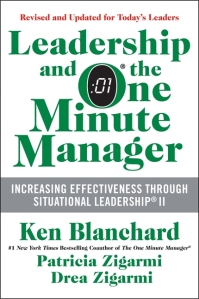 The main idea of The New One Minute Manager is to help people reach their full potential. In the book, Spencer Johnson and I describe the Three Secrets: One Minute Goals, One Minute Praisings, and One Minute Re-Directs. I believe the most powerful of the three is One Minute Praisings.
The main idea of The New One Minute Manager is to help people reach their full potential. In the book, Spencer Johnson and I describe the Three Secrets: One Minute Goals, One Minute Praisings, and One Minute Re-Directs. I believe the most powerful of the three is One Minute Praisings.
For a One Minute Praising to be effective, you must praise the person as soon as you can and tell them in specific terms what they did right. Let them know how good you feel about what they did and encourage them to do more of the same.
As a manager, the most important thing you can do is to catch people doing something right. And when someone is just beginning to learn a task, it’s important to catch them doing something approximately right so you can help them move to the desired result.
One of my favorite examples of this is a parent teaching a child to speak. Suppose you want to teach your toddler son how to ask for a drink of water. Of course his first attempt isn’t going to be a full sentence. If you waited for him to say “Give me a glass of water, please” before you gave him a drink, that wouldn’t turn out too well. So you start by pointing to a glass of water and saying, “water, water.” After several weeks or months, all of a sudden one day your son says, “waller.” You are so excited you hug and kiss him, give him a drink of water, and get Grandma on the phone so the child can say, “waller, waller.” It wasn’t the exact way to say water—but it was close, so you praised his progress. Eventually, you only accept the word water and then you start working on please. By setting up achievable targets along the way and praising progress, you help the learner move toward the end goal.
In the workplace, unfortunately, many managers wait until people do something exactly right before praising them. The problem with this is that some people never become high performers because their managers concentrate on catching them doing things wrong, keeping an eye only on the desired performance instead of praising progress along the way.
This happens with new employees all the time. Their manager welcomes them aboard, takes them around to meet everybody, and then leaves them alone. Not only does the manager not catch the new person doing something approximately right, they periodically zap them just to keep them moving. I call this the leave-alone-zap management style. You leave a person alone, expecting good performance from them. When you don’t get it, you zap them. What do you think that does to a person’s performance and engagement?
If you set clear goals and catch your people doing things right, you’ll create a work environment where people are engaged and fully committed to doing a good job. It only takes a few minutes to praise someone for a job well done. It will be the most important minute of your day.


